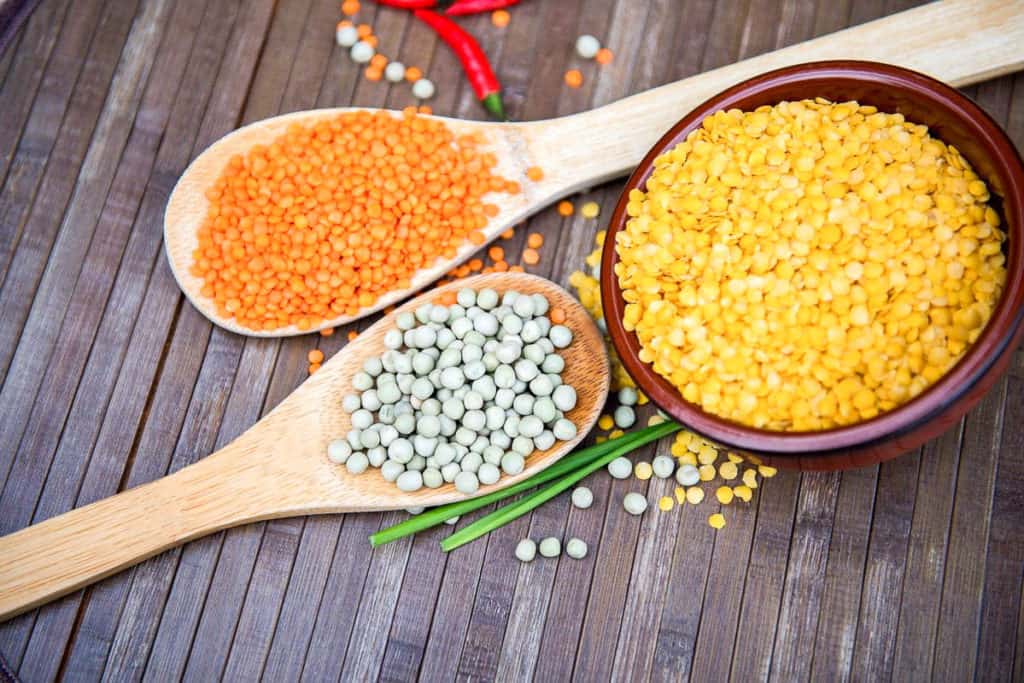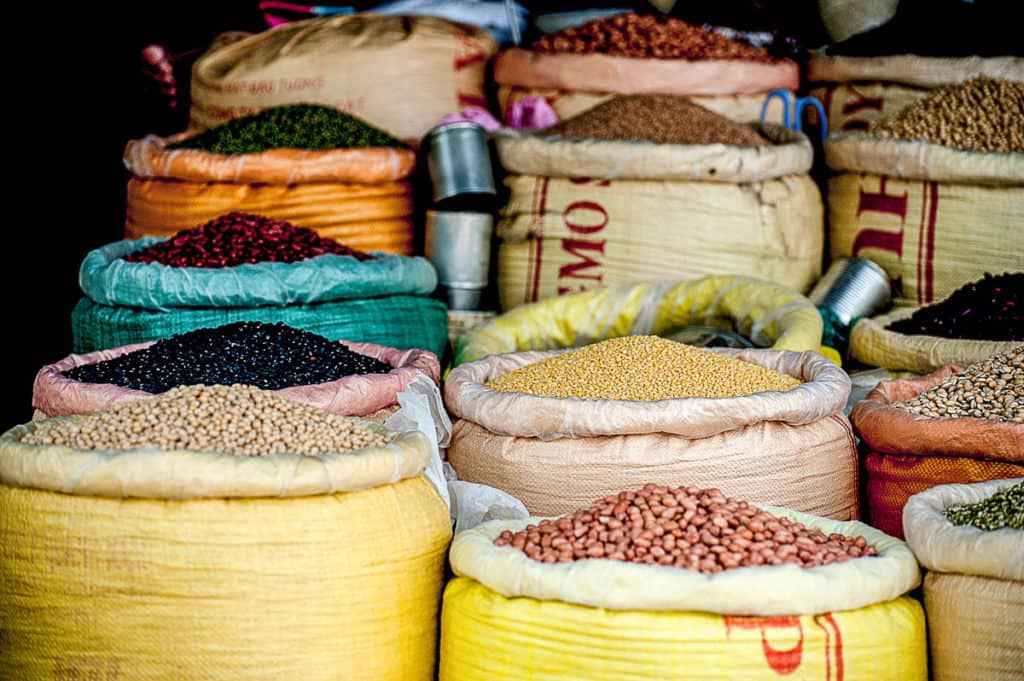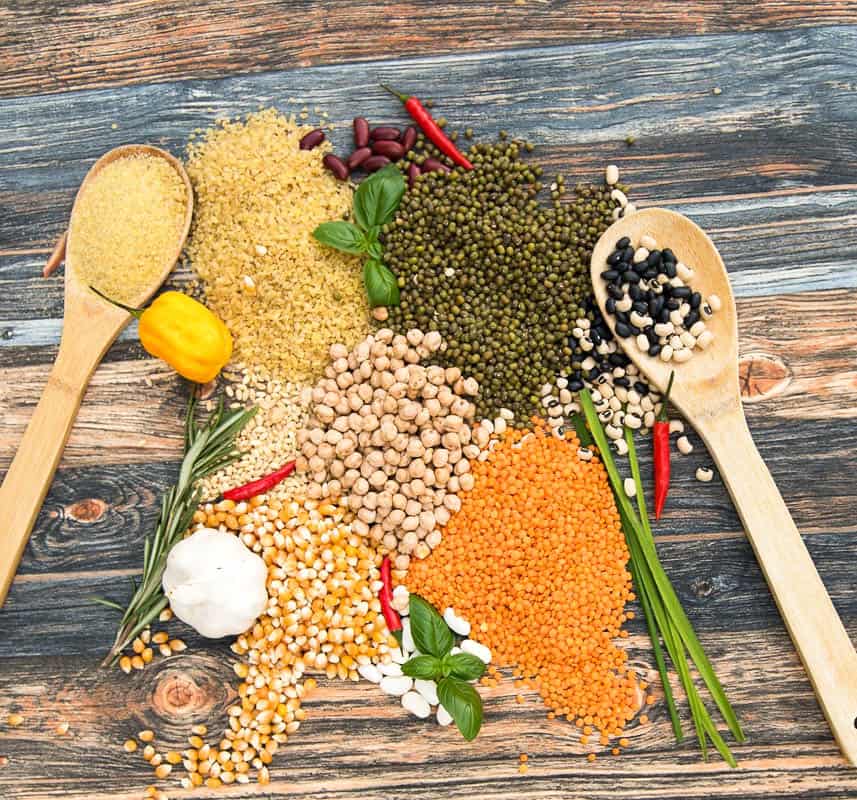In this post, we answer the question of what are pulses and why are they good for you and the environment. There’s loads of information on the benefits of pulses and tips on how to cook them.
*** Please note that I am not a nutritionist, just a lover of beans. Nothing in this food blog is meant to constitute medical advice. Before making any drastic changes in your diet please consult with a medical professional or nutritionist.
What Are Pulses
As much as this recipe blog focuses on recipes under the general category of beans, it includes recipes for more than that. One category of food that has been around for centuries but few people are really familiar with is pulses.
Pulses are the edible, dried seeds of plants in the legume family. (See this post here about the difference between pulses and legumes). They grow in pods. Pulses are the seeds that come from inside these pods.
There are a variety of pulses available to eat. There are 11 types of pulses that have been identified by the United Nations. They define pulses to include dry beans, dry broad beans, dry peas, chickpeas, cowpeas, pigeon peas, lentils, Bambara beans, vetches, lupins, and pulses nes.
Pulses nes are other minor types of pulses that don’t fit within the other categories. Pulses are grown all over the world in over 170 countries.
The Bean Bites Pro Tip
Pulses only refer to crops that are harvested dry, like dry beans or chickpeas. Some vegetable crops, like green beans or edamame, also have edible seeds inside, but they are harvested green rather than dried. They are referred to as legumes instead of pulses.

What Are The Benefits Of Pulses
Like many beans, pulses are a great source of protein. They are high in fiber but also are low fat. They also include vitamins and minerals like calcium, zinc, potassium, iron, and folate (folate is a type of vitamin B).
They are a great alternative protein. Pulses have two or three times as much protein as grains, even quinoa. They are also an alternative to meat proteins.
Because they are so much less expensive than meat they form the backbone of many diets for people around the world. This is one reason why there are so many pulses in Indian cooking. There are loads of recipes with lentils and chickpeas.
Fiber In Pulses
There are two different types of fiber, soluble and insoluble. Soluble fiber can maintain body weight and blood sugar levels as well as lower cholesterol. Insoluble fiber can aid digestion. Cooked pulses contain both of these types of fiber. Pulses are actually cholesterol-free and low in saturated fats.
Can Pulses Help To Maintain Weight?
In simple terms, yes! Pulses can help to lower cholesterol, reduce blood pressure and even help people to maintain a healthy weight. This is particularly important as we age (and we are aging ourselves, seemingly quicker every day).

The Importance Of Pulses And Sustainability
Sustainability is a big buzzword these days. That’s great for pulses because pulses are a sustainable source of food. Although I am hesitant to buy into the claims that we should all stop eating meat altogether, I know that people are trying to look for sustainable sources of food.
First, pulses have a low carbon footprint. This is because they don’t use as much energy input as other crops. They don’t need the same kind of fertilizer as other crops. Because they don’t need fertilizer they don’t release as much nitrous oxide into the air as they grow when compared to some other crops.
Second, when pulses are harvested they leave behind some soil-healthy residue. This means that the next crop to grow has a leg up because the soil is rich. This makes them a great thing to grow in crop rotation with other crops.
Third, pulses are water efficient. They don’t use as much water and grow well in dry environments. This means that they can grow where other crops might not be able to.
Is It Better To Cook Canned Or Dried Pulses
There are a lot of time benefits to using canned pulses. They are ready to cook and in some cases ready to eat.
Eating dried pulses can be healthier, particularly for people looking to monitor their sodium intake. They can take more time to prepare though.
I will use both dry and canned beans in our recipes. When it comes to lentils, we use both dry and jarred. It doesn’t take as long to cook dry lentils as dried beans. I find it easier to cook dry lentils than dry beans.
The Bean Bites Pro Tip
When cooking pulses, it’s best to add acidic ingredients after the pulses are soft. This includes ingredients like vinegar, tomatoes, or citrus. Although not detrimental it can slow the cooking process. It can also leave the beans a little mushy.
Top Tips For Cooking Dried Pulses
I will include our top tips for cooking pulses in individual recipes. Here are a few general tips to get you started.
Some kinds of pulses need to be soaked before cooking. When it comes to cooking dry beans and chickpeas, they usually need to be soaked before cooking.
There are a few ways to cook dry beans, some involve soaking them overnight. This obviously takes time and planning ahead. In some cases, you can use a slow cooker or an instant pot to speed up the process as well.
Other types of pulses, including lentils, don’t need to be soaked, though, before they are cooked. That makes them a little easier to cook dry.
Anytime you soak pulses, be sure to dispose of the water in which they are soaked. Don’t start your recipe with that water. Also, rinse the pulses under cold water before cooking them.
Why We Love Cooking With Pulses
We are food and travel writers and I consider myself fairly educated on food around the world. It wasn’t until a trip to Bristol, England, during World Pulses Day, that I realized what pulses are and how important they are.
We’ve been using recipes for pulses at home for years but didn’t realize what the word pulse meant. During that trip to Bristol, we learned about the nutritional value of pulses. We also learned about the sustainability of pulse crops and how important they are to the British local economy.
Beans, Lentils, And Pulses Recipes
We already were cooking dishes within the pulse family, we just didn’t know it yet. That’s why as much as this is a recipe site named “The Bean Bites” we include recipes for all sorts of pulses, beans, lentils, and legumes.

FAQs – What Are Pulses
This is a frequently asked question. Lentils are merely a type of pulse. There are also loads of different types of lentils too, including brown, red, and yellow lentils.
Cereals are harvested grasses, like barley and wheat. They are cultivated for their starches and used for cooking or even distilling liquors. Cereals are high in carbohydrates. Pulses are high in protein, fiber, and low in carbohydrates.
Pulses are dried seeds. Many seeds, though, can be germinated and become sprouts. The most common germinated pulse is probably the bean sprout. Sprouts are also super healthy.
In total there are eleven types of pulses. Some of the most recognizable types of pulses include beans, lentils, and peas. Chickpeas, black-eyed peas, and kidney beans are all pulses. In general, pulses are an economic, low-fat, high-protein food source. They count towards the recommended five daily portions of fruit and vegetables.
Because pulses grow in pods, they are placed in the legume family. However, a “pulse” refers to the dry edible seed inside the pod. As such, lentils are one of the most common types of pulses. Lentils are low in fat, high in fiber, two of the main characteristics of pules.
The best example of what is the difference between a legume and a pulse is the green pea. The outer pea pod is a legume. The inner pea is considered a pulse. From a scientific perspective, legumes refers to any plant from the Fabaceae family. These plants must have leaves, stems, and the all-important pod.
